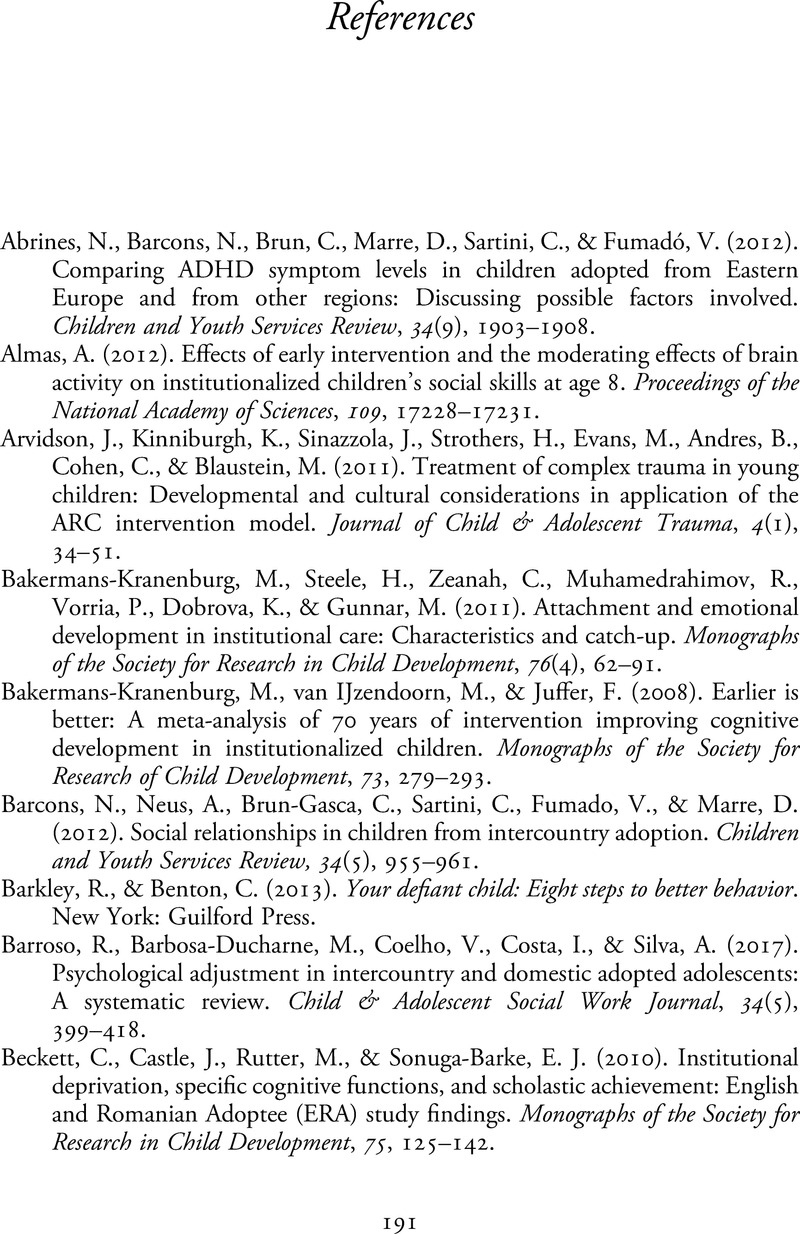Book contents
- Rehabilitation and Remediation of Internationally Adopted Children
- Rehabilitation and Remediation of Internationally Adopted Children
- Copyright page
- Contents
- Acknowledgments
- Introduction
- Chapter 1 Internationally Adopted Children
- Chapter 2 Developmental, Neuropsychological, Psychoeducational, and “Dynamic” Assessment of Internationally Adopted Children
- Chapter 3 Differential Diagnoses and the Structure of School-Based Recommendations for Internationally Adopted Children
- Chapter 4 Developmental Trauma Disorder Rehabilitation in Internationally Adopted Children
- Chapter 5 Cognitive Remediation of Internationally Adopted Children in School and Family
- Chapter 6 Language Remediation of Internationally Adopted Children
- Chapter 7 Academic Remediation of Internationally Adopted Children
- Chapter 8 Creation of Social and Cultural Competence in Internationally Adopted Children
- Chapter 9 Therapeutic Parenting as a Major Force in Rehabilitation and Remediation of Internationally Adopted Children
- Chapter 10 Transitioning to Adulthood Using the Individual Transitional Plan
- Conclusion
- Appendix
- References
- Index
- References
References
Published online by Cambridge University Press: 08 October 2021
- Rehabilitation and Remediation of Internationally Adopted Children
- Rehabilitation and Remediation of Internationally Adopted Children
- Copyright page
- Contents
- Acknowledgments
- Introduction
- Chapter 1 Internationally Adopted Children
- Chapter 2 Developmental, Neuropsychological, Psychoeducational, and “Dynamic” Assessment of Internationally Adopted Children
- Chapter 3 Differential Diagnoses and the Structure of School-Based Recommendations for Internationally Adopted Children
- Chapter 4 Developmental Trauma Disorder Rehabilitation in Internationally Adopted Children
- Chapter 5 Cognitive Remediation of Internationally Adopted Children in School and Family
- Chapter 6 Language Remediation of Internationally Adopted Children
- Chapter 7 Academic Remediation of Internationally Adopted Children
- Chapter 8 Creation of Social and Cultural Competence in Internationally Adopted Children
- Chapter 9 Therapeutic Parenting as a Major Force in Rehabilitation and Remediation of Internationally Adopted Children
- Chapter 10 Transitioning to Adulthood Using the Individual Transitional Plan
- Conclusion
- Appendix
- References
- Index
- References
Summary

- Type
- Chapter
- Information
- Publisher: Cambridge University PressPrint publication year: 2021



